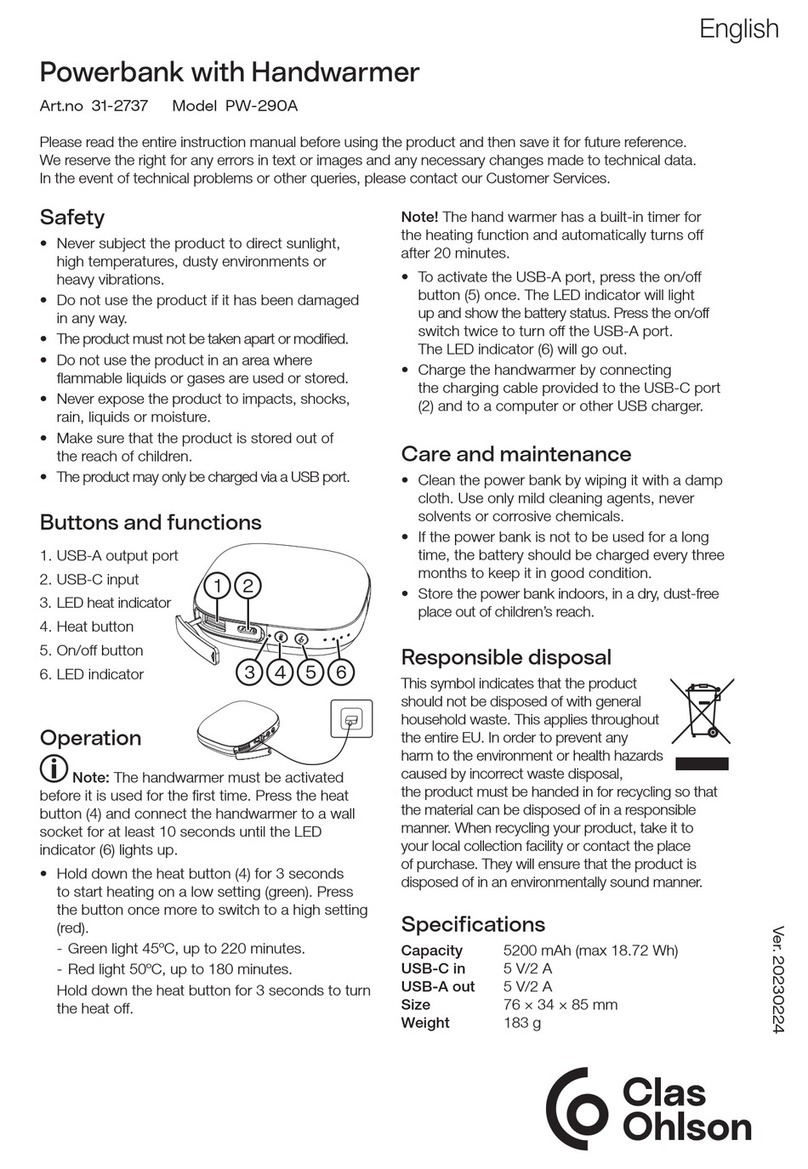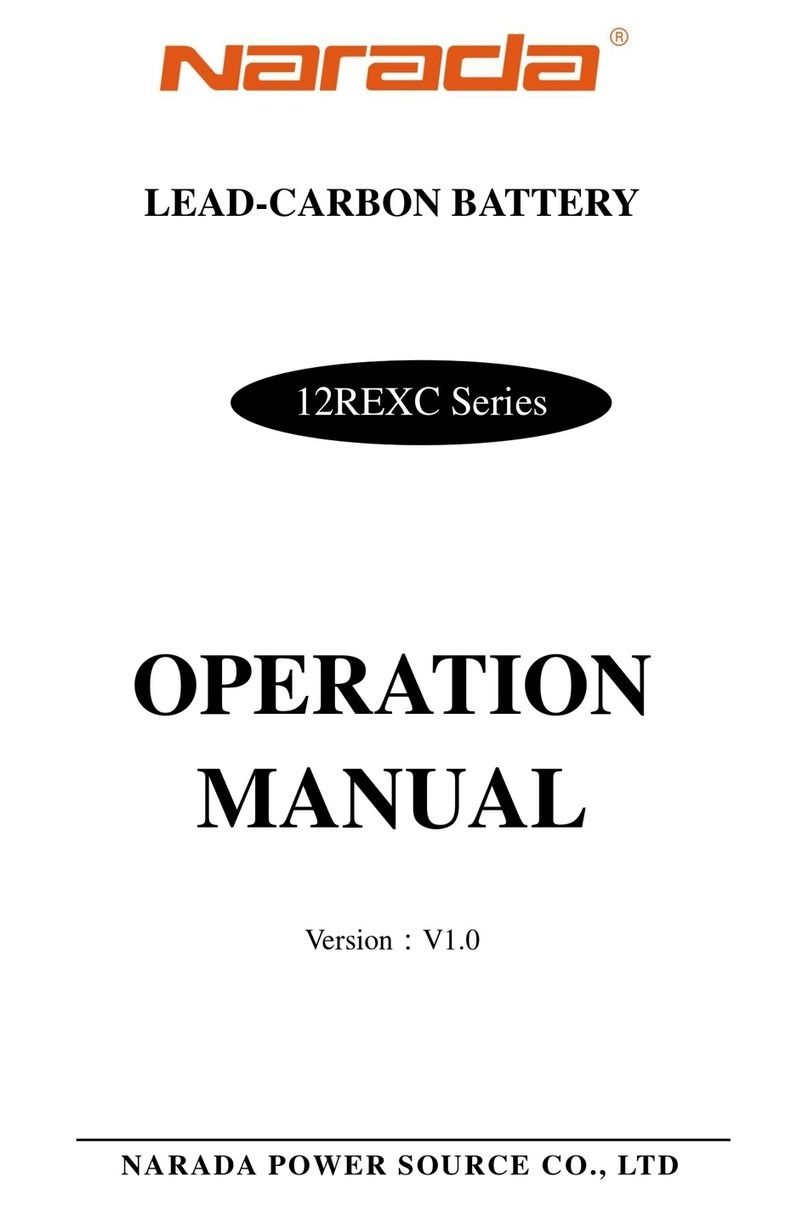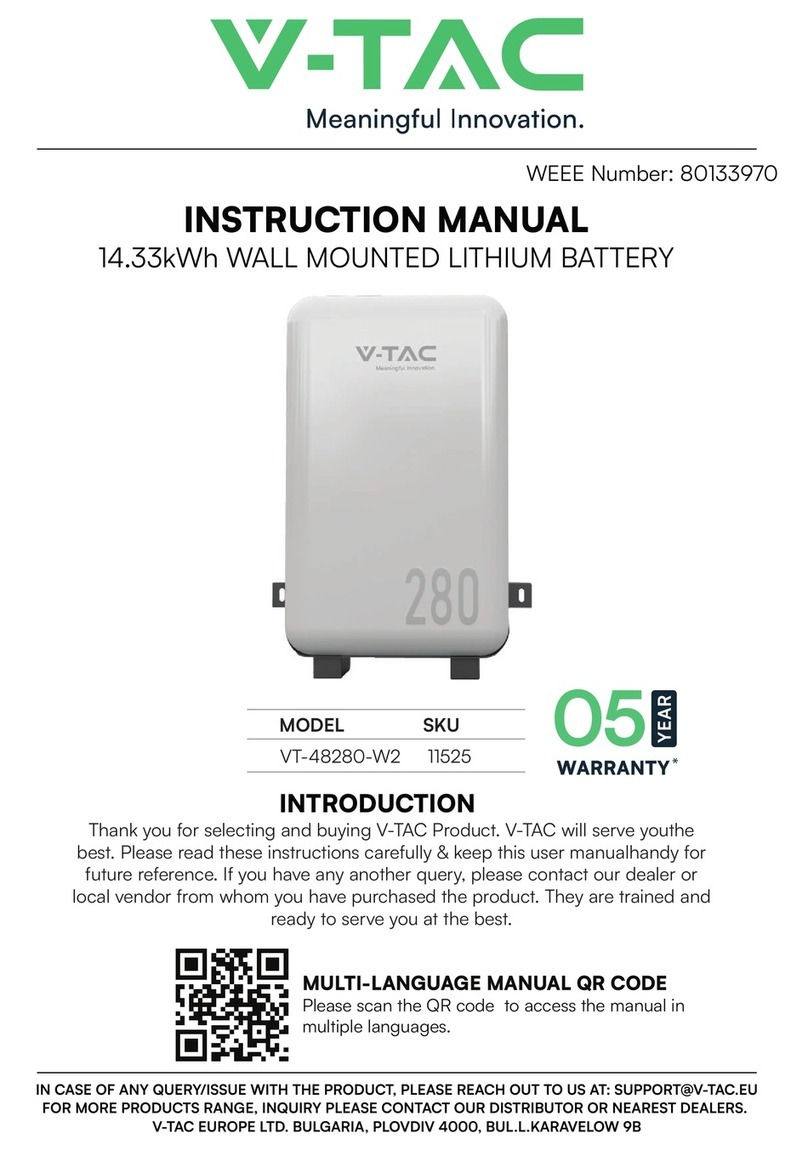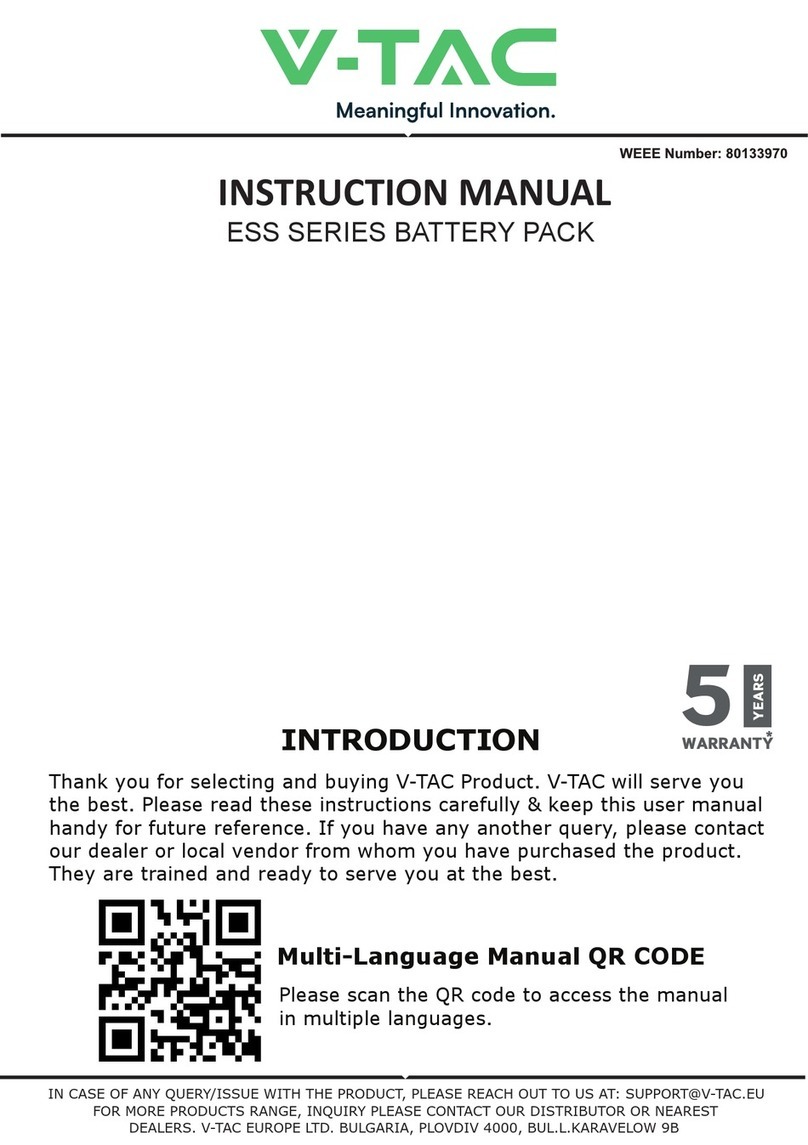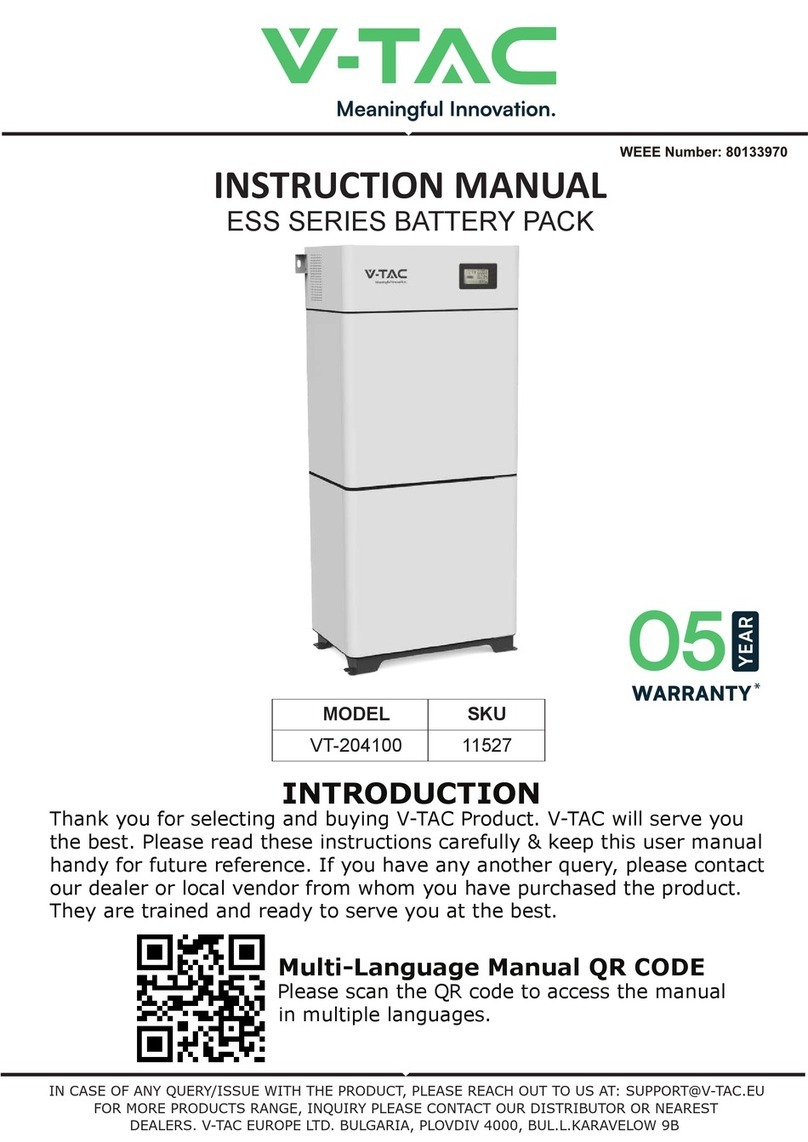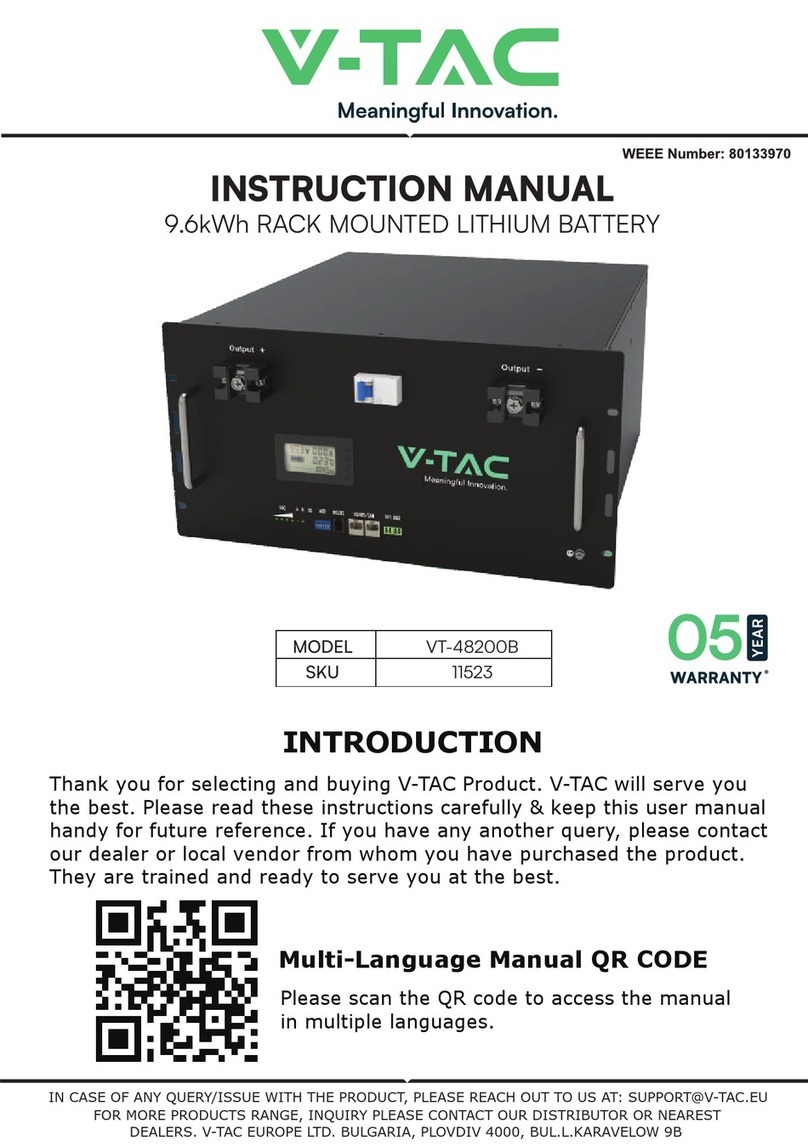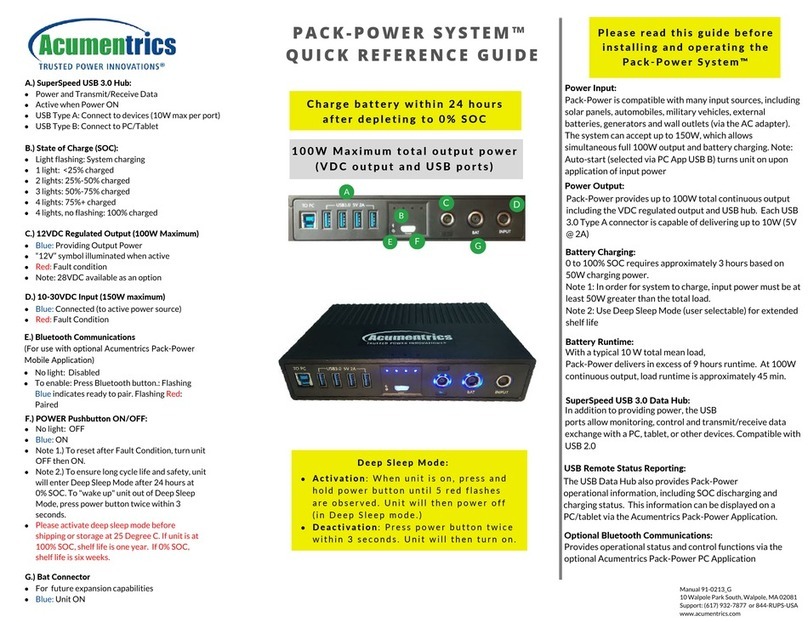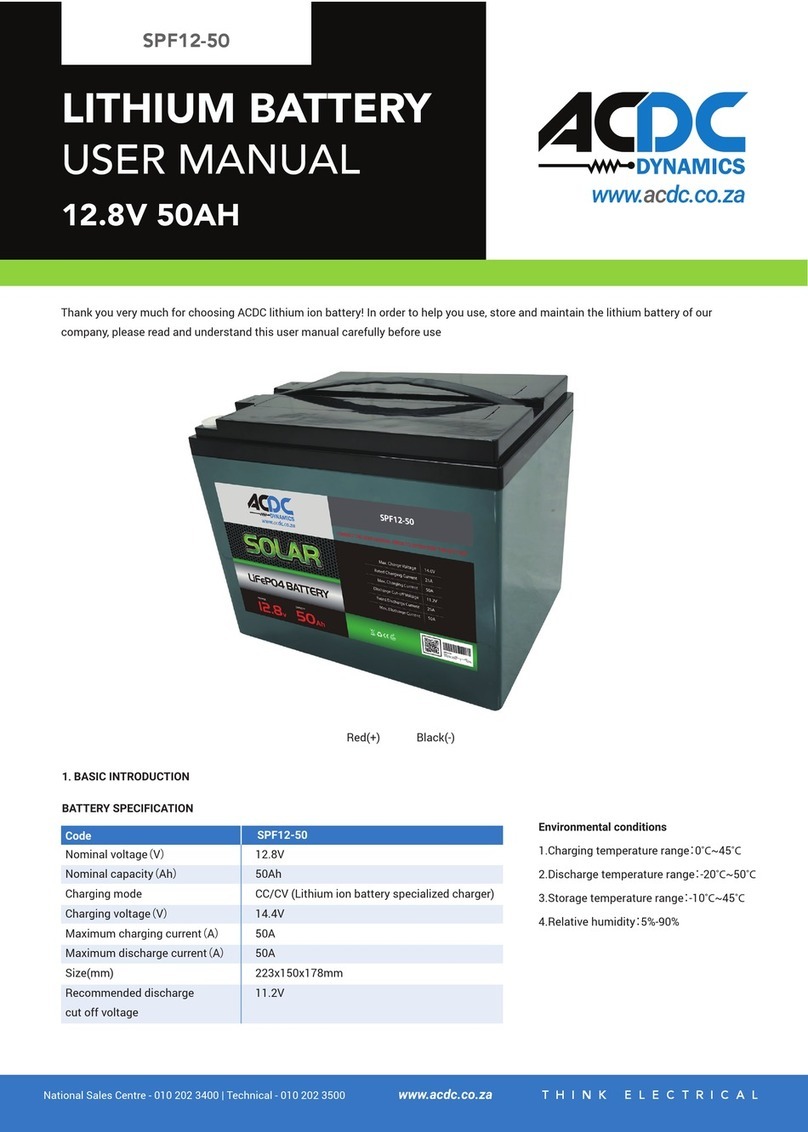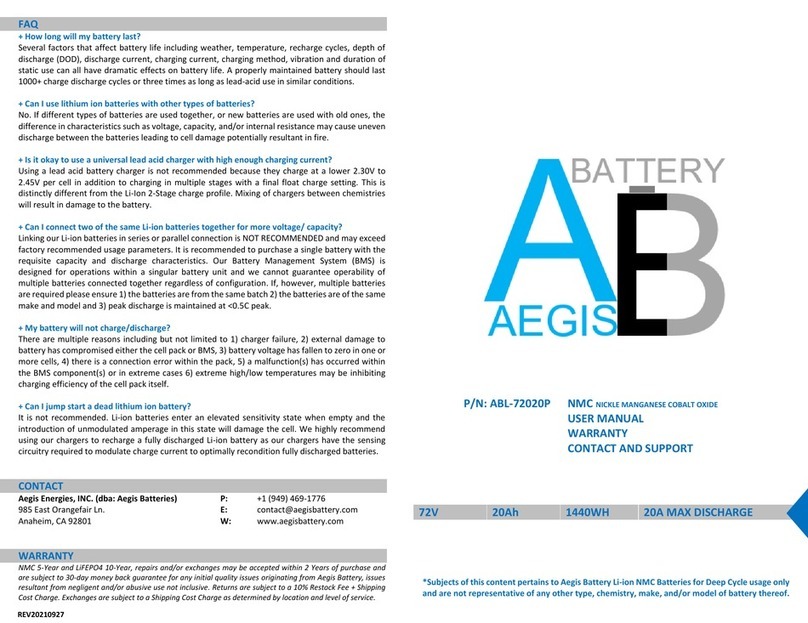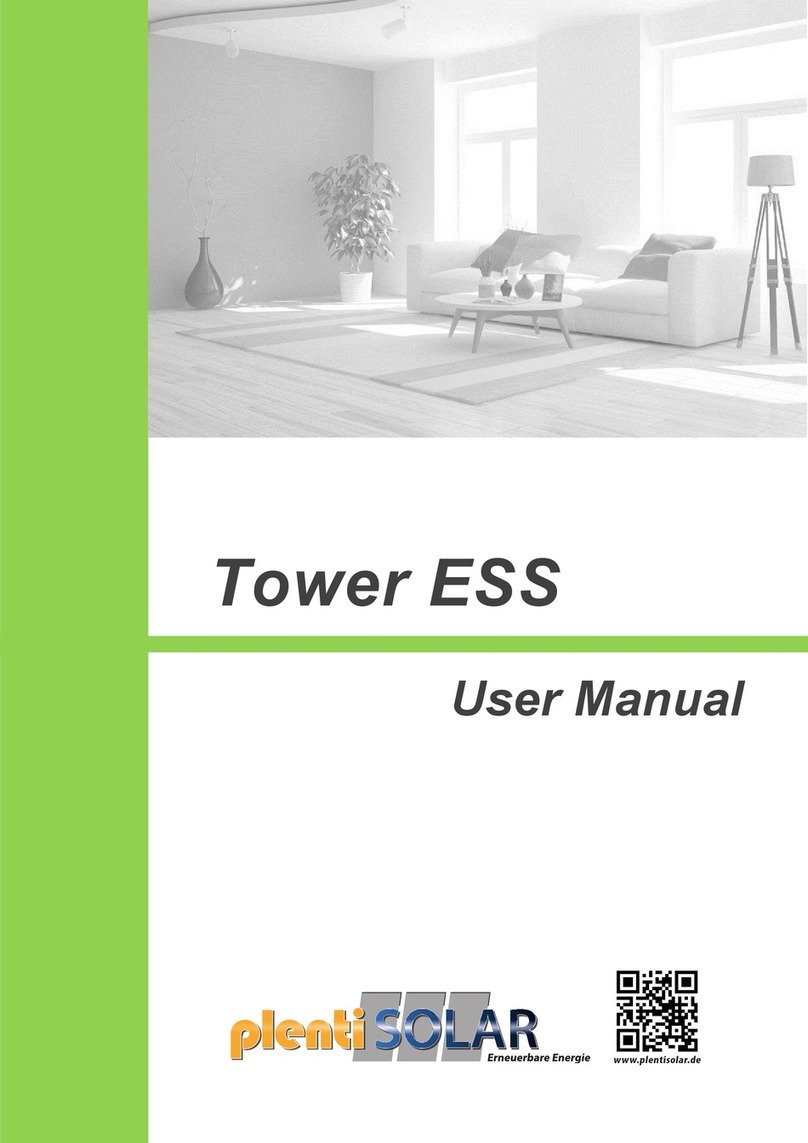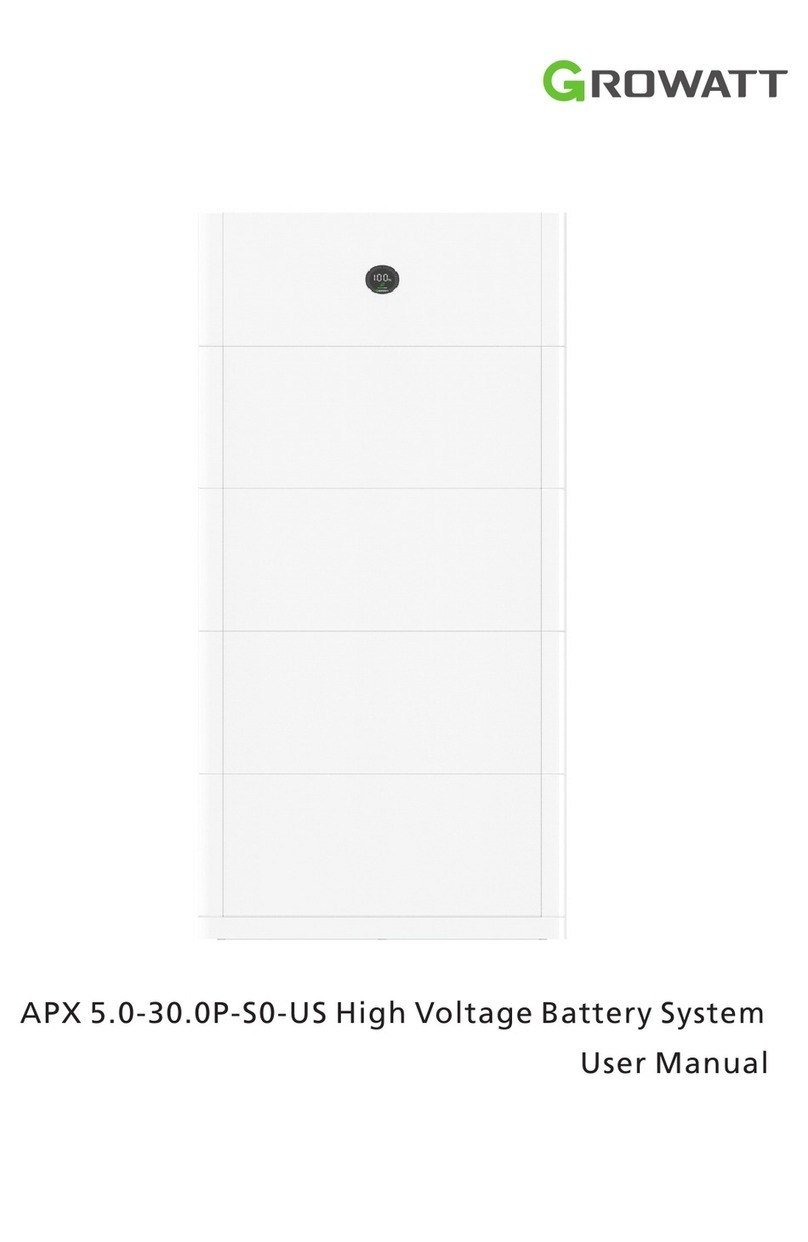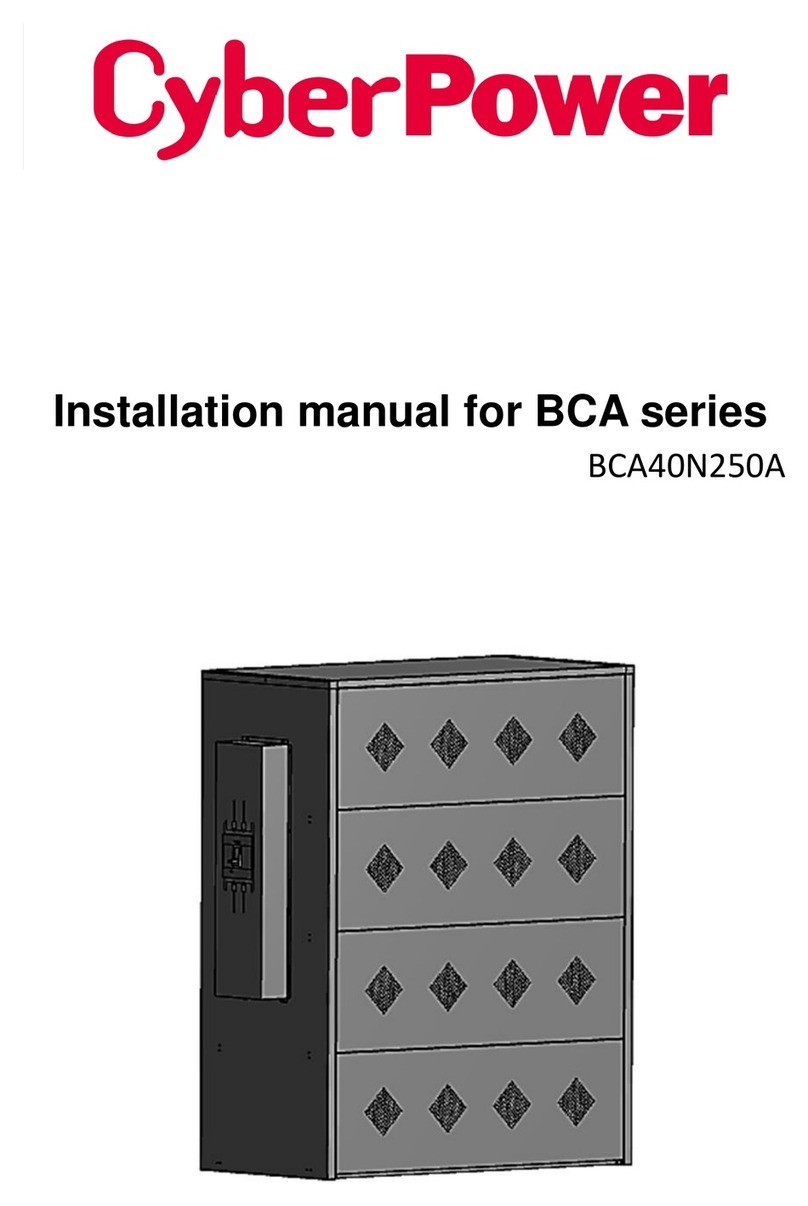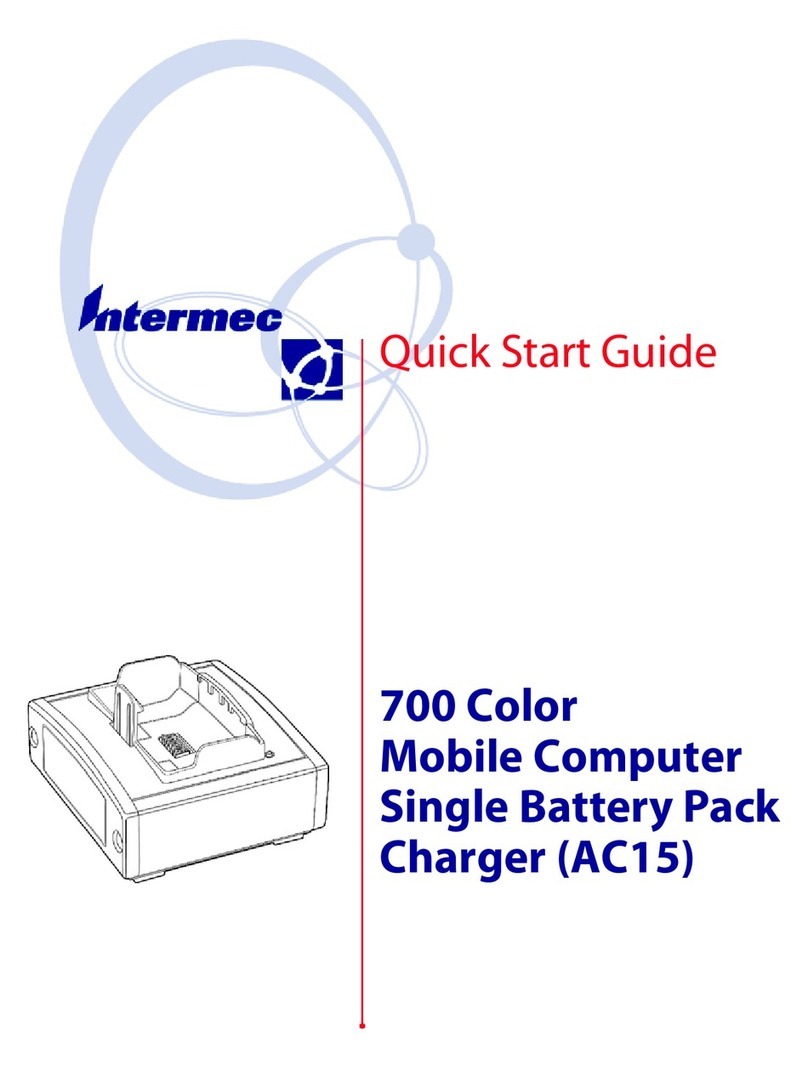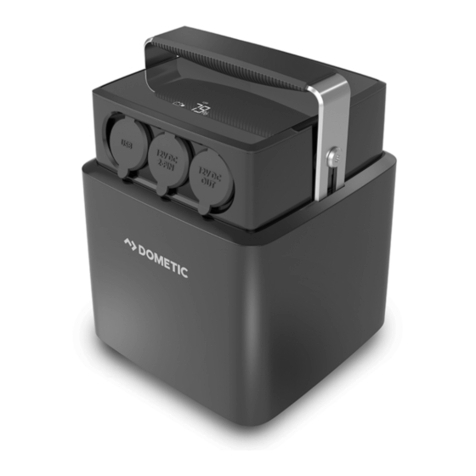
Before carrying out battery work, you must read carefully the safety precautions
and master the correct installation and connection methods of the battery.
Prohibit to turn it upside down, tilt, or collide.
Prohibit to short-circuit the positive and negative poles of the battery,
otherwise it will cause the battery to be damaged.
Prohibit to throw the battery pack into a fire source.
Prohibit to modify the battery, and it is strictly prohibited to immerse the
battery in water or other liquids.
DO NOT place installation tools on the battery during battery installation.
DO NOT disassemble, squeeze, bend, deform, puncture, or shred the
battery without the authorization of Vestwoods and authorized dealers.
DO NOT exceed the temperature range, otherwise it will affect the battery
performance and safety.
The battery circuit must be kept disconnecting status during installation
and maintenance operations.
Check the battery connection end bolts regularly to confirm that the bolts
are tight.
2 Safety
2.2 Abuse Operation
2.1 Safety Precautions
The battery pack needs to avoid abuse operations under the following (includ-
ing but not limited to) conditions:
Abuse Operation Protection Description
If the positive and negative poles are connected reversely,
the battery will be directly damaged.
External short circuit If the battery pack is short circuited externally, the battery
will be directly damaged.
Series connection application
The battery pack does not support the application of
battery packs in series. If the battery packs are forcedto be
connected in series, the batteries may be directly damaged,
and may even cause fire, explosion and other dangers.
Reverse connection of positive
and negative poles
1 Foreword.................................................................................................................................................
2 Safety........................................................................................................................................................
2.1 Safety Precautions......................................................................................................................
2.2 Abuse Operation.........................................................................................................................
3 Overview..................................................................................................................................................
3.1 Product Description...................................................................................................................
3.1.1 Features...............................................................................................................................
3.1.2 Basic Functions.................................................................................................................
3.2 Application Scenario.................................................................................................................
4 Application Description.....................................................................................................................
4.1 Parallel Connection Application............................................................................................
4.2 Low-temperature Application................................................................................................
4.3 Low battery-capacity Storage (SOC≤5%)...........................................................................
4.4 Application of Nearing the Ocean.........................................................................................
5 Product Introduction..........................................................................................................................
5.1 Panel Introduction......................................................................................................................
5.1.1 Panel Function...................................................................................................................
5.1.2 Indicator Description......................................................................................................
5.1.3 DIP Address........................................................................................................................
5.1.4 Communication Port Definition..................................................................................
5.1.5 Dry Contact Alarm Definition.......................................................................................
6 Installation..............................................................................................................................................
6.1 Tools Preparation........................................................................................................................
6.2 Unpacking and Inspection.......................................................................................................
6.3 Preparing for Installation.........................................................................................................
6.4 Installation....................................................................................................................................
6.5 Cable Connection.......................................................................................................................
7 Power On.................................................................................................................................................
7.1 Power-on Operation...................................................................................................................
7.1.1 Pre-check Preparing Power-on Operation...............................................................
7.1.2 Power on..............................................................................................................................
7.1.3 UIWare Configuration.....................................................................................................
7.1.4 Check by UI software.......................................................................................................
7.2 Power System Parameter Setting...........................................................................................
8 Shipment & Maintenance & Storage...........................................................................................
8.1 Shipment.......................................................................................................................................
8.2 Maintenance................................................................................................................................
8.2.1 Battery Maintenance Considerations.......................................................................
8.2.2 Routine Maintenance.....................................................................................................
8.3 Battery Storage...........................................................................................................................
9 Trouble Shooting.................................................................................................................................
10 Warranty...............................................................................................................................................
11 Abbreviations.....................................................................................................................................

